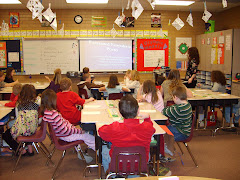My lesson plan is based on three different types of faults that cause earthquakes and how they affect the Earth's surface. This lesson plan can also be taught from the Social Constructivism perspective. I have decided to teach this lesson using an instructional conversation. In an instructional conversation, the teacher is the more knowledgeable other. The teacher is the one who leads the conversation, providing instruction on the topic when necessary. This instructional conversation would start by asking the students if they have ever been in an earthquake, and if they have, what it felt like. It is important to activate and use background knowledge in any good teaching, but it is also a key component of a good instructional conversation. The conversation would then turn to what causes an earthquake and asking how the Earth moves during an earthquake. This helps establish the thematic focus for the lesson. Then the instructional part of the instructional conversation comes into play. This is when I would share the first type of fault that causes earthquakes, or the lateral fault and model the fault with my hands. Then I would have the students participate and do the same thing with their hands. I would then ask the students where they felt pressure when they did this demonstration and how their hands reacted. I would ask them why they think the demonstration worked the way it did. I would ask them what they think the connection between the model we made with our hands and how the Earth responds to this kind of fault. Because I am doing an instructional conversation, I would ask these questions to encourage general participation and allow them to express their thoughts instead of just telling the students about the lateral faults without the students' involvement. I would have this kind of conversation for the next two faults as well.
At the end of this activity, I would have students work in pairs and discuss diagrams of the different types of faults. They would label the faults and discuss how they know which kind of fault to classify the diagrams. This is a good way for the students to apply their knowledge to a new situation.
In my lesson, I used cultural tools by having the students look at diagrams. These kinds of tools help them to break down the knowledge they learned in the instructional conversation and apply to a different setting. I also tried to make sure that this lesson would be able to take into account the students' zone of proximal development, which is what a student can do with help that they cannot do on their own. Although all the students will not be at the same level, it is important to try and reach as many of the students that I can. I tried to do this by realizing that most students would have a difficult time just reading about faults and trying to figure out what they actually look like. By having the students model these faults themselves, they are hopefully able to understand the concepts better than if they had tried on their own to understand them. This lesson also has opportunities for teachers to scaffold student learning. This can be done by reminding the students of the characteristics of each fault before students work in pairs to identify the faults in diagrams. By doing this the teacher supports their learning and helps them be ready to work by themselves. The relationship between the learner and the more knowledgeable learner, the teacher in this case, is important to consider also. It is important that this relationship is built on trust and understanding. When teachers and students have this kind of relationship, there is a safe learning environment and students are more willing to take risks in order to understand the concepts. While part of the goal is for the learner to gain knowledge from the more knowledgeable other, it is also important for the teacher to take advantage of opportunities to learn from the students. There is always more to learn and different perspectives and explanations that are good to consider. This is why it is important to have a solid relationship of respect and an attitude of learner between the learner and the more knowledgeable other.
Technology In The Classroom
16 years ago

No comments:
Post a Comment